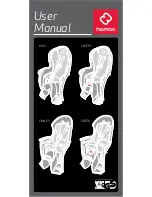
34
NOTE:
The right and left pedals of a bicycle each have
a different thread and are not interchangeable. Never
force a pedal into the incorrect crank arm. If removing
a pedal, remember that the right pedal axle must be
turned counter clockwise, i.e. the reverse of when in-
stalling. If replacing the original pedals with a new set,
make sure the size and the axle of the new pedal set
is compatible with the cranks on your bicycle. Bicycles
use one of two types of cranks and these use different
axle threads. Your bicycle may be equipped with cranks
that are a one piece design with no separate axle.
These operate with pedals that have a 12.7 mm thread.
Bicycles equipped with three piece crank sets with a
separate axle, left crank and right crank, use a slightly
larger 14mm thread.
NOTE:
Never try and force a pedal with the wrong
thread size into a bicycle crank.
Chain and chain wheel
The bicycle chain and the chain wheel should be lubri-
cated with light oil at least every month or after use in
wet, muddle, or dusty conditions. Wipe off excess oil
after lubricating. Do not get oil on the tyres or rim brak-
ing surfaces.
Chain and chain wheel inspection:
• Make sure that the chain is kept clean, rust-free and
frequently lubricated in order to extend its life as long
as possible.
• Ensure that the chain has no stiff links. They must all
move freely.
• If the chain stretches, breaks, or causes inefficient
gear shifting, replace the chain.
• If the chain has become worn and needs replacing,
it is likely that the chain wheel will also have become
worn and should also be replaced.
• Take the chain off the chain wheel and rotate it with
your hand. If you hear a grinding noise or if the chain
wheel suddenly stops mid-spin, it may need adjust-
ment or replacement. Contact a professional bicycle
mechanic to have the chain wheel adjusted or re-
placed.
WARNING: Never ride the bicycle if the
pedals are loose. Always wear shoes.
















































